Burkina Faso, located in West Africa, is home to a diverse range of ecosystems and boasts a rich biodiversity of animal and plant species. The country’s forests, wetlands, and mountain areas provide habitats for numerous species, including 128 mammals, 516 birds, 60 reptiles and amphibians, 121 fish, 1,515 insects, and 1,951 flora species. However, this valuable biodiversity faces several threats that need to be addressed.
Key Takeaways:
- Burkina Faso is home to a diverse range of ecosystems and a rich biodiversity of animal and plant species.
- Deforestation and habitat loss are major threats to Burkina Faso’s biodiversity.
- Mining activities and the cotton sector have negative impacts on biodiversity.
- The country has implemented measures and legislation to protect and manage biodiversity.
- Coordinated efforts are needed from stakeholders to promote sustainable practices and preserve biodiversity.
The Ecological Diversity of Burkina Faso
Burkina Faso’s ecological diversity encompasses forests, wetlands, and mountain areas, providing habitats for a wide array of flora and fauna. This West African country boasts a rich biodiversity, with a remarkable range of species inhabiting its diverse ecosystems. From majestic elephants to vibrant birds, Burkina Faso is home to a diverse collection of wildlife.
The country’s forests are teeming with life, hosting a variety of plant species and providing a vital habitat for many animals. Wetlands, such as the Mare aux Hippopotames, are important breeding grounds for numerous bird species and are essential for the survival of amphibians and reptiles. In the mountainous regions of Burkina Faso, unique and endemic plant species thrive, contributing to the country’s remarkable flora.
This ecological diversity is a testament to Burkina Faso’s commitment to preserving its natural heritage. Efforts have been made to protect and manage biodiversity through initiatives such as the National Biodiversity Strategy and Action Plan (NBSAP). The NBSAP aims to promote sustainable practices that preserve the country’s diverse ecosystems and ensure the survival of its flora and fauna.
| Species |
Number |
| Mammals |
128 |
| Birds |
516 |
| Reptiles and Amphibians |
60 |
| Fish |
121 |
| Insects |
1,515 |
| Flora |
1,951 |
Quote:
“Burkina Faso’s ecological diversity is a treasure that must be protected for future generations. Our forests, wetlands, and mountain areas are not just home to a vast array of species but also provide vital ecosystem services that sustain our communities. It is essential that we work together to ensure the preservation of our biodiversity and promote sustainable practices for the benefit of both nature and people.” – Environmentalist

Preserving biodiversity in Burkina Faso is crucial for maintaining the delicate balance of ecosystems and safeguarding the country’s natural heritage. By addressing threats such as deforestation, pollution, and habitat loss, Burkina Faso can pave the way for a sustainable future that prioritizes the protection of its unique flora and fauna.
The Magnificent Wildlife of Burkina Faso
Burkina Faso is home to an astonishing array of wildlife, with 128 mammal species, 516 bird species, and 60 reptile and amphibian species. Its diverse ecosystems, ranging from forests to wetlands and mountain areas, provide habitats for these incredible creatures. The country’s uniqueness lies in the harmony between its flora and fauna, creating a delicate balance of life.
Among the remarkable mammal species found in Burkina Faso are the majestic panthers, known for their grace and agility. These elusive creatures roam the forests and grasslands, displaying their beauty in their natural habitats. The elephants of Burkina Faso also command attention, with their sheer size and gentle nature. They traverse the landscapes, leaving behind trails of wonder.
The reptile and amphibian species of Burkina Faso add to the country’s biodiversity in extraordinary ways. Crocodiles, with their ancient existence, can be found in the rivers and lakes, a testament to their resilience. Pythons, known for their serpentine elegance, slither through the vegetation, showcasing the intricacies of nature’s design.
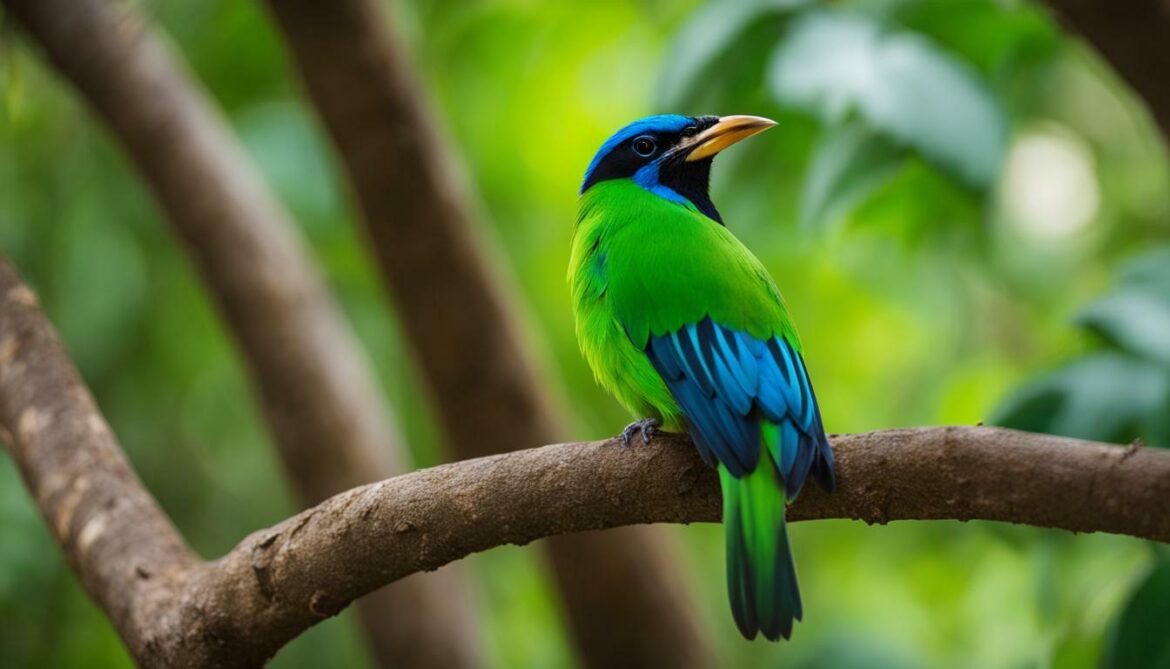
However, the delicate balance of Burkina Faso’s wildlife is under threat. Human activities, such as deforestation and habitat loss, have put these magnificent species at risk. It is crucial to recognize the importance of conservation efforts and prioritize the protection of these endangered species. Through sustainable management practices and collaborative initiatives, we can safeguard Burkina Faso’s biodiversity for future generations to experience and cherish.
| Animal Species |
Number of Species |
| Mammals |
128 |
| Birds |
516 |
| Reptiles and Amphibians |
60 |
| Fish |
121 |
Burkina Faso’s wildlife is a testament to the beauty and diversity of our natural world. Let us join hands in preserving and protecting these magnificent creatures, ensuring their presence for generations to come.
The Flora of Burkina Faso
The flora of Burkina Faso is incredibly diverse, with 1,951 species of plants, each playing a vital role in the country’s ecosystems. From majestic trees to delicate wildflowers, Burkina Faso’s plant life is a testament to the richness of its biodiversity.
One notable plant species found in Burkina Faso is the shea tree (Vitellaria paradoxa). This iconic tree is known for its valuable nuts, which are used to produce shea butter, an important ingredient in cosmetics and traditional medicine. Apart from its economic significance, the shea tree provides shade and shelter for various animal species and helps in soil conservation.
Burkina Faso is also home to a wide variety of medicinal plants, such as the neem tree (Azadirachta indica) and the baobab tree (Adansonia digitata). These plants have been used for centuries by local communities for their healing properties. The neem tree, for example, is known for its antiseptic and antifungal properties, while the baobab tree is rich in vitamin C and has numerous health benefits.
| Plant Species |
Role in Ecosystem |
| Shea tree (Vitellaria paradoxa) |
Provides shade, shelter, and soil conservation |
| Neem tree (Azadirachta indica) |
Has antiseptic and antifungal properties |
| Baobab tree (Adansonia digitata) |
Rich in vitamin C and has numerous health benefits |
These are just a few examples of the remarkable plant diversity found in Burkina Faso. Unfortunately, the country’s flora is under threat due to deforestation, habitat loss, and unsustainable agricultural practices. It is crucial that we recognize the importance of preserving this invaluable natural heritage and work towards sustainable practices that promote the coexistence of humans and nature.
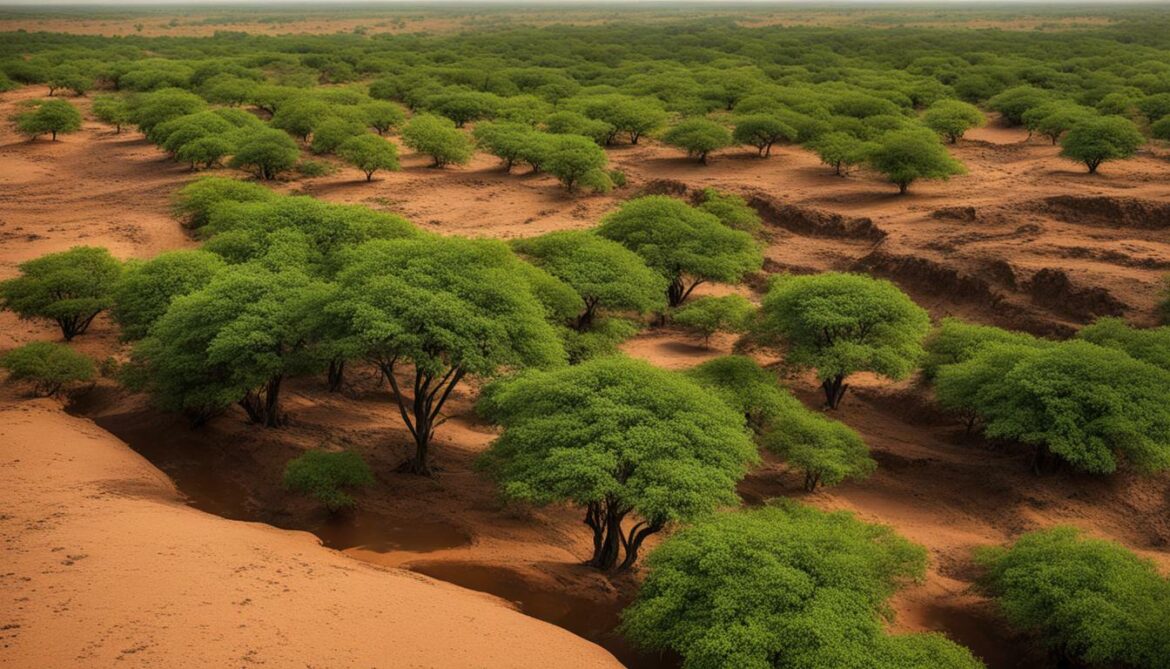
“The flora of Burkina Faso is a treasure trove of unique and valuable plant species, each contributing to the intricate web of life in this beautiful country.”
Conservation Efforts
Recognizing the need to protect Burkina Faso’s flora, the government, local communities, and various organizations have initiated conservation efforts. These include the establishment of protected areas, such as national parks and reserves, to safeguard important plant habitats.
- The Arly-Singou Complex, a UNESCO World Heritage Site, is one such protected area. It is home to diverse plant species, including the critically endangered Burkina Faso endemic Acacia mauritanica subsp. sengalensis.
- The government has also implemented reforestation programs to restore degraded lands and promote the growth of indigenous plant species.
Through education and awareness campaigns, the importance of sustainable land management and the conservation of Burkina Faso’s plant biodiversity is being emphasized. By involving local communities in these efforts, the aim is to foster a sense of ownership and encourage responsible and sustainable practices for the long-term preservation of the country’s flora.
Threats to Biodiversity in Burkina Faso
Despite its rich biodiversity, Burkina Faso faces significant threats, with deforestation and habitat loss posing major challenges. The country’s annual deforestation rate of 4% is alarming, leading to the loss of vital habitats for numerous species. Freshwater bodies and wetlands are also shrinking, negatively impacting biodiversity. Additionally, agricultural systems are facing decreased productivity, and droughts and harmful human activities are causing degradation of agricultural soils.
Among the endangered species in Burkina Faso are panthers, elephants, crocodiles, and pythons. To combat these threats, Burkina Faso has implemented the National Biodiversity Strategy and Action Plan (NBSAP), aimed at promoting sustainable biodiversity management. The NBSAP is currently being updated to enhance its effectiveness.
Efforts to protect biodiversity in Burkina Faso require enhanced capacity-building, coordination, and funding to support implementation. The country has established legislation, such as the Environment Code and Forestry Code, to govern environmental and natural resource management. Furthermore, measures have been taken to integrate biodiversity considerations into various sectors of the economy.
Specific threats to biodiversity in Burkina Faso include mining activities, particularly gold extraction, and the cotton sector. Mining contributes significantly to the country’s GDP, but it has led to deforestation, pollution, and land degradation. The cotton sector, another major industry, has also resulted in the loss of natural habitats and pollution. It is imperative that government agencies, mining companies, and cotton producers collaborate to address these threats and promote sustainable practices that preserve Burkina Faso’s precious biodiversity.
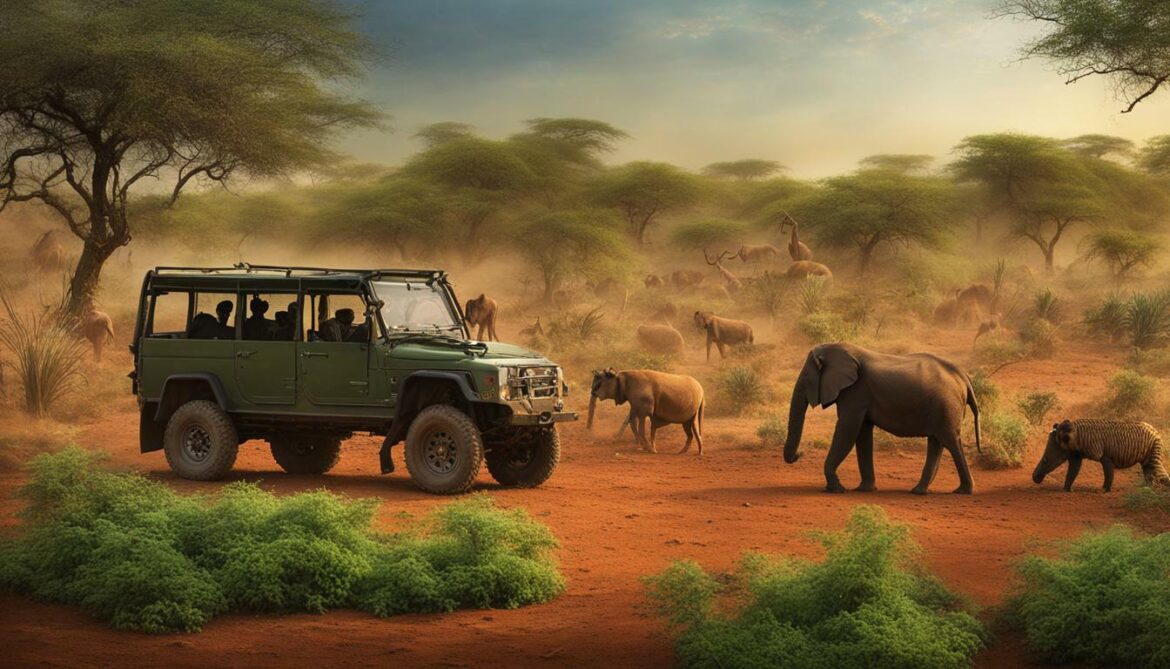
Deforestation and its Impact on Biodiversity
Deforestation in Burkina Faso is occurring at an alarming rate, leading to the loss of critical habitats for numerous species. According to data from the Food and Agriculture Organization (FAO), the country has a high annual deforestation rate of 4%. This rapid deforestation is primarily driven by agricultural expansion, logging, and fuelwood collection.
The consequences of deforestation are far-reaching and devastating for biodiversity in Burkina Faso. As forests are cleared, many animal and plant species lose their natural habitats, pushing them towards extinction. Iconic species such as panthers, elephants, crocodiles, and pythons are particularly vulnerable to habitat destruction.
Furthermore, the removal of forest cover disrupts the delicate balance of ecosystems, leading to a loss of biodiversity across various trophic levels. Many species that depend on these forests for food, shelter, and breeding grounds are now struggling to survive. The impact is not limited to fauna alone; deforestation also affects flora, with numerous plant species facing the threat of extinction.
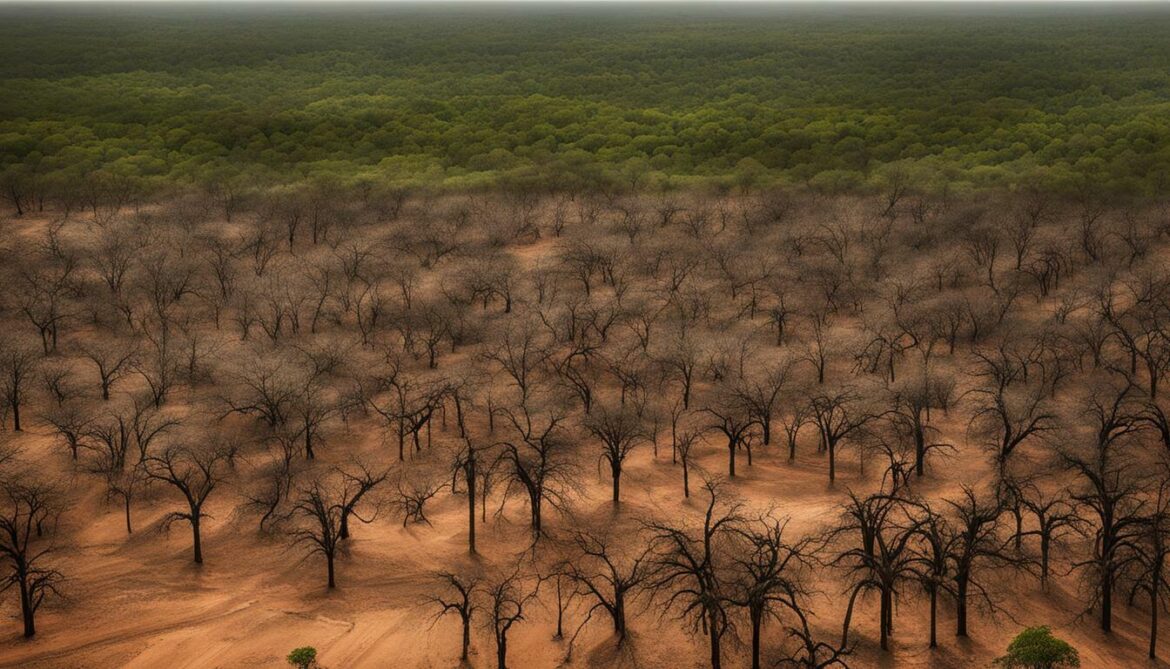
To address this urgent issue, Burkina Faso has taken steps to combat deforestation and protect its diverse ecosystems. The government has implemented the National Biodiversity Strategy and Action Plan (NBSAP), which aims to promote sustainable management practices and conserve biodiversity. The NBSAP covers various sectors, including forestry, agriculture, and energy, integrating biodiversity considerations into their policies and practices.
Efforts are also being made to increase education and awareness about the importance of forest conservation. Local communities and stakeholders are being engaged to encourage sustainable land use practices and reduce dependence on deforestation-causing activities. Furthermore, the enforcement of environmental and forestry laws is crucial to deter illegal logging and ensure the preservation of forests.
In conclusion, the rapid deforestation in Burkina Faso poses a significant threat to the country’s rich biodiversity. Urgent action is needed to curb deforestation rates, protect critical habitats, and preserve the unique flora and fauna that call Burkina Faso home. By implementing sustainable practices, educating communities, and enforcing environmental laws, Burkina Faso can pave the way for a more biodiverse and sustainable future.
Conservation Efforts in Burkina Faso
Burkina Faso has implemented various conservation strategies and action plans to safeguard its unique wildlife and ecosystems. The country recognizes the importance of preserving its diverse flora and fauna for future generations. One of the key initiatives is the National Biodiversity Strategy and Action Plan (NBSAP), which aims to promote sustainable management of biodiversity across different sectors.
Efforts to protect Burkina Faso’s biodiversity extend to legislation and policy development. The country has enacted the Environment Code and Forestry Code to regulate environmental and natural resource management. These laws provide a framework for sustainable practices and help mitigate the negative impacts of human activities on ecosystems.
Integrating biodiversity considerations into various sectors of the economy is another important aspect of conservation in Burkina Faso. The government, along with private companies and organizations, is taking steps to ensure that economic development is balanced with environmental sustainability. By incorporating biodiversity into sectors such as agriculture, mining, and tourism, Burkina Faso aims to promote responsible practices that minimize harm to ecosystems.
| Biodiversity Conservation Strategies in Burkina Faso |
Description |
| National Biodiversity Strategy and Action Plan (NBSAP) |
Aims to promote sustainable management of biodiversity across different sectors. |
| Environment Code and Forestry Code |
Legislation to regulate environmental and natural resource management in Burkina Faso. |
| Integration of biodiversity considerations |
Efforts to incorporate biodiversity into sectors such as agriculture, mining, and tourism. |
While progress has been made in conservation efforts, there is still a need for increased capacity-building, coordination, and funding. Burkina Faso recognizes the importance of collaboration between government agencies, NGOs, local communities, and other stakeholders to effectively protect its rich biodiversity. By working together, we can ensure the preservation of Burkina Faso’s wildlife and ecosystems for future generations to enjoy.
Sustainable Development and Biodiversity in Burkina Faso
Sustainable development practices play a crucial role in ensuring the long-term preservation of Burkina Faso’s biodiversity. Located in West Africa, Burkina Faso is blessed with diverse ecosystems that support a rich variety of flora and fauna. With over 1,500 species of flora and more than 700 species of fauna, the country’s biodiversity is a valuable asset that needs protection.
Deforestation poses a significant threat to Burkina Faso’s biodiversity. The country experiences a 4% annual deforestation rate, resulting in the loss of crucial habitats for many species. To combat this, sustainable land management practices are essential. Burkina Faso has been working on implementing the National Biodiversity Strategy and Action Plan (NBSAP) to promote sustainable management of biodiversity and protect endangered species.
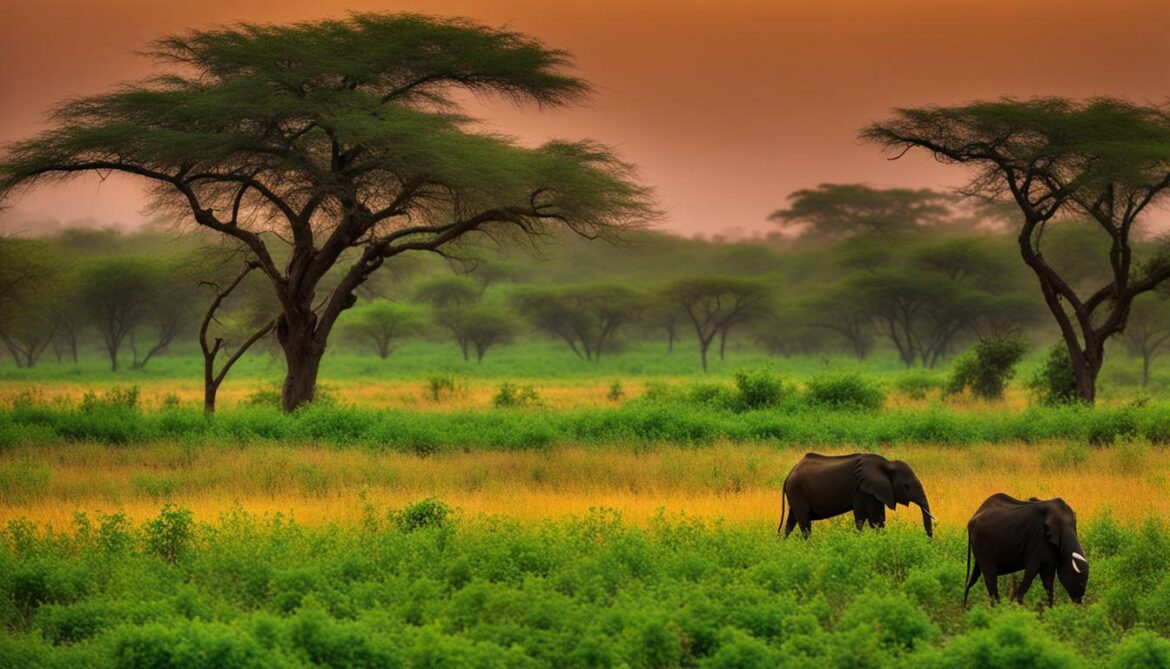
Efforts are being made to integrate biodiversity considerations into various sectors of the economy. Legislation such as the Environment Code and Forestry Code has been enacted to provide a legal framework for environmental and natural resource management. The goal is to balance economic development with the preservation of biodiversity.
However, specific sectors, such as mining and the cotton industry, present challenges to sustainable development and biodiversity preservation. Mining activities, especially gold extraction, have led to deforestation, pollution, and land degradation. The cotton sector, a major industry in Burkina Faso, has also contributed to habitat loss and pollution.
Collaboration among stakeholders is crucial to address these challenges. Government agencies, mining companies, and cotton producers must come together to promote sustainable practices and minimize the negative impacts on biodiversity. By working together, Burkina Faso can ensure the continued protection of its unique and precious biodiversity for future generations.
| Biodiversity Data for Burkina Faso |
Number of Species |
| Mammals |
128 |
| Birds |
516 |
| Reptiles and Amphibians |
60 |
| Fish |
121 |
| Insects |
1,515 |
| Flora |
1,951 |
Addressing Specific Threats to Biodiversity in Burkina Faso
Specific industries, such as mining and the cotton sector, pose significant threats to the biodiversity of Burkina Faso. The mining industry, particularly gold extraction, has been a major driver of deforestation, pollution, and land degradation in the country. The extraction process involves clearing large areas of forest, destroying the natural habitats of many species. It also leads to the release of toxic chemicals into the environment, contaminating water sources and harming both flora and fauna.
The cotton sector, another major industry in Burkina Faso, has also had detrimental effects on biodiversity. The expansion of cotton cultivation has resulted in the loss of natural habitats, as large areas of land are cleared for planting. In addition, the use of synthetic pesticides and fertilizers in cotton production has contributed to soil degradation and water pollution. These practices have a profound impact on the local ecosystems, disrupting the delicate balance of species and leading to a decline in biodiversity.
Efforts are being made to address these threats and promote sustainable practices that protect biodiversity in Burkina Faso. The government, in collaboration with various stakeholders, is implementing measures to mitigate the negative impacts of mining and the cotton sector. This includes enforcing stricter regulations and guidelines for environmental protection, promoting responsible mining practices, and encouraging sustainable agricultural practices in the cotton sector.
It is crucial that all stakeholders work together to find solutions that balance economic development with the preservation of biodiversity. By adopting sustainable practices and investing in alternative industries that prioritize environmental conservation, Burkina Faso can protect its rich biodiversity for future generations to enjoy.
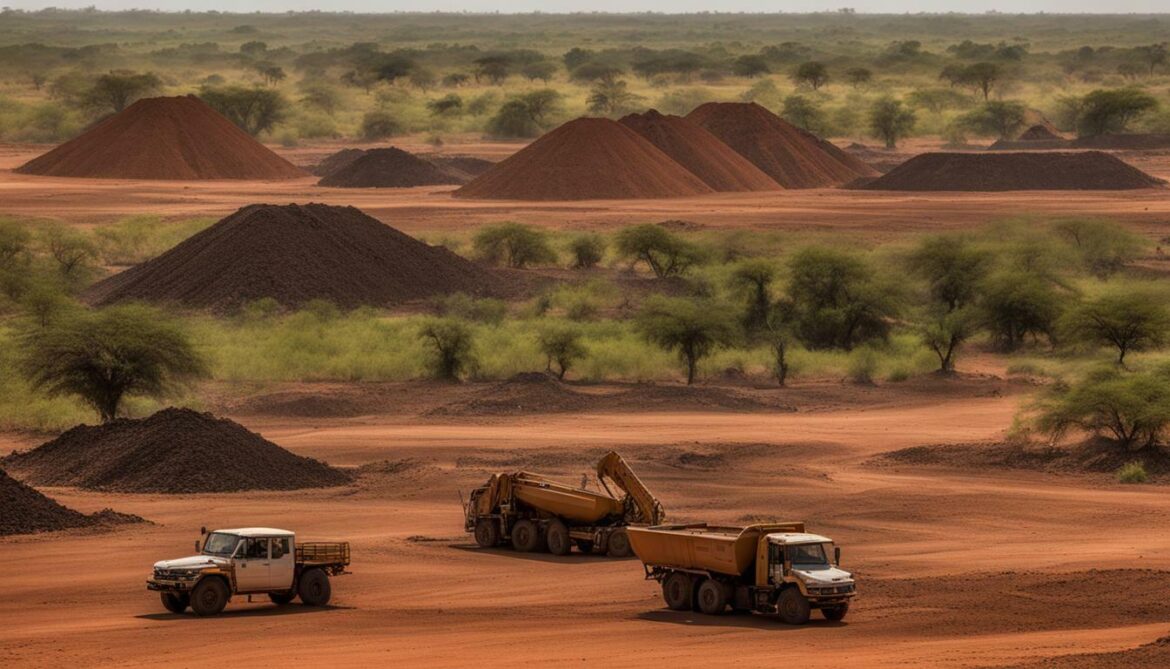
Legislation and Policies for Biodiversity Protection in Burkina Faso
Burkina Faso has enacted legislation and policies aimed at safeguarding its biodiversity and promoting sustainable practices. The country recognizes the importance of preserving its unique ecosystems and the rich variety of plant and animal species that call it home. These measures are crucial to ensure the long-term sustainability of Burkina Faso’s natural heritage.
One of the key pieces of legislation in place is the Environment Code, which provides a legal framework for environmental protection and management. This code encompasses various aspects of biodiversity conservation, including the protection of natural habitats, the prevention of pollution, and the regulation of activities that may have an impact on the environment.
The Forestry Code is another significant legislation that focuses on the sustainable management of forest resources. It aims to prevent deforestation, promote reforestation, and regulate the exploitation of forest products. This code plays a crucial role in combating the high deforestation rates in Burkina Faso and ensuring the preservation of vital habitats for numerous species.

In addition to specific legislation, Burkina Faso has also developed the National Biodiversity Strategy and Action Plan (NBSAP). This plan outlines the country’s goals and strategies for biodiversity conservation and sustainable use of natural resources. It focuses on promoting community-based conservation initiatives, enhancing protected areas, and integrating biodiversity considerations into various sectors of the economy.
Efforts are ongoing to update and strengthen the existing legislation and policies in line with international commitments and best practices. Burkina Faso recognizes the need for continuous improvement and adaptation to address emerging challenges and ensure the effective protection of its unique biodiversity.
| Legislation and Policies for Biodiversity Protection in Burkina Faso |
Description |
| Environment Code |
A legal framework for environmental protection and management, covering various aspects of biodiversity conservation and pollution prevention. |
| Forestry Code |
Focused on sustainable forest management, including measures to prevent deforestation, promote reforestation, and regulate the use of forest resources. |
| National Biodiversity Strategy and Action Plan (NBSAP) |
A comprehensive plan outlining Burkina Faso’s strategies for biodiversity conservation, community-based initiatives, and integration of biodiversity considerations into the economy. |
Conclusion
Legislation and policies play a crucial role in protecting and preserving biodiversity in Burkina Faso. By enacting laws such as the Environment Code and Forestry Code, the country demonstrates its commitment to sustainable practices and the preservation of its unique ecosystems. The National Biodiversity Strategy and Action Plan further reinforces these efforts by outlining comprehensive strategies for biodiversity conservation. However, continuous improvement and collaboration are necessary to address emerging threats and ensure the long-term sustainability of Burkina Faso’s rich natural heritage.
Collaborative Efforts for Biodiversity Conservation in Burkina Faso
The conservation of Burkina Faso’s biodiversity requires coordinated efforts from government agencies, industries, and local communities. Recognizing the importance of preserving its unique flora and fauna, Burkina Faso has implemented various measures and strategies to promote biodiversity conservation.
One notable initiative is the National Biodiversity Strategy and Action Plan (NBSAP), which serves as a roadmap for sustainable management of biodiversity in the country. The NBSAP aims to enhance the capacity of stakeholders, improve biodiversity monitoring and research, and integrate biodiversity considerations into sectoral policies and plans.
The government has enacted relevant legislation, such as the Environment Code and Forestry Code, to regulate environmental and natural resource management. These laws provide a legal framework for tackling issues like deforestation, habitat destruction, and pollution. Efforts are also being made to strengthen institutional capacities and enhance governance for effective biodiversity conservation.
Collaboration between government agencies, mining companies, and cotton producers is crucial in addressing specific threats to biodiversity. Mining activities, particularly gold extraction, have led to deforestation, pollution, and land degradation. By implementing sustainable mining practices and minimizing environmental impacts, the mining sector can contribute to biodiversity conservation.
Similarly, the cotton sector, which is an important industry for Burkina Faso, must prioritize sustainable practices that minimize the loss of natural habitats and reduce pollution. By supporting initiatives like organic cotton farming and reducing the use of harmful pesticides, the cotton sector can contribute to the preservation of biodiversity.
Biodiversity Conservation Effort Summary
| Collaborative Efforts |
Biodiversity Conservation Measures |
| Government |
– Implementation of the National Biodiversity Strategy and Action Plan (NBSAP) |
|
– Enactment of relevant legislation (Environment Code, Forestry Code) |
| Mining Sector |
– Adoption of sustainable mining practices |
| Cotton Sector |
– Promotion of sustainable cotton farming and reduction of pesticide use |
These collaborative efforts, along with increased capacity-building, coordination, and funding, are crucial in safeguarding Burkina Faso’s biodiversity for future generations. By working together, stakeholders can ensure the sustainable development of the country while protecting its invaluable natural heritage.
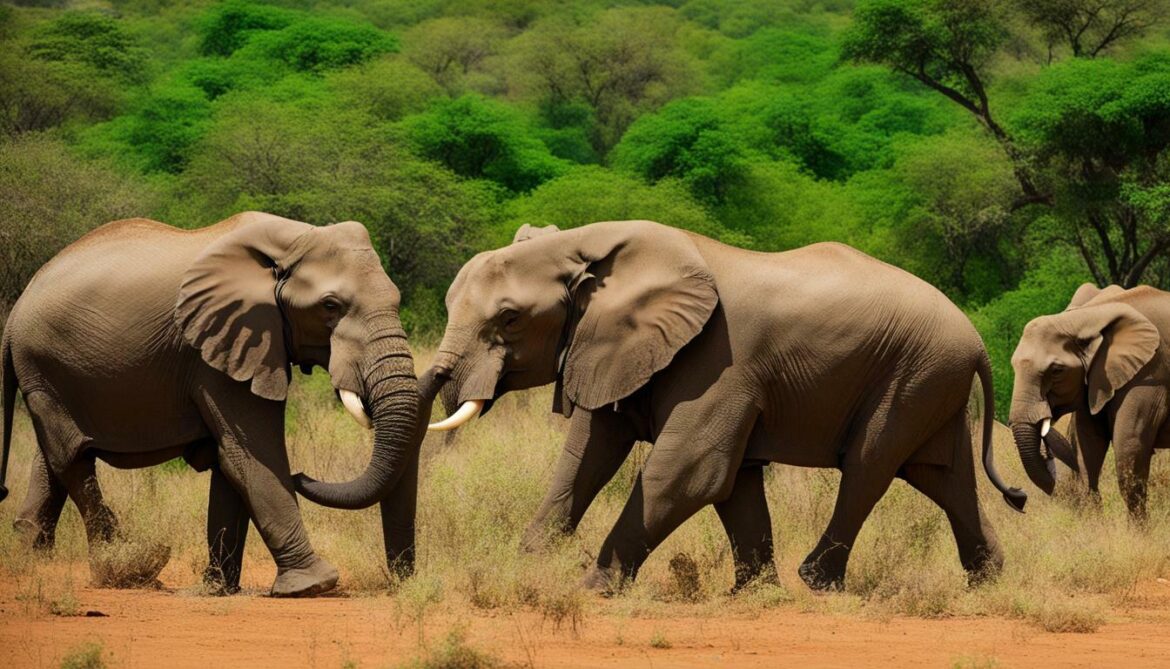
Safeguarding the biodiversity of Burkina Faso is essential for the preservation of its unique ecosystems and the long-term sustainable development of the country. Located in West Africa, Burkina Faso boasts a rich diversity of flora and fauna, with over 128 mammal species, 516 bird species, 60 reptile and amphibian species, 121 fish species, 1,515 insect species, and 1,951 plant species. However, this biodiversity is under threat.
The high deforestation rates in Burkina Faso, reported at 4% annually by the FAO, pose a significant challenge to biodiversity conservation. The loss of habitat for many species is a direct result of this deforestation, coupled with the reduction of freshwater bodies and wetlands. The negative impacts of these threats extend beyond the natural environment, affecting agricultural systems, leading to decreased yields, and contributing to the degradation of soils.
Several species in Burkina Faso are particularly vulnerable, including panthers, elephants, crocodiles, and pythons. To address these challenges, Burkina Faso has implemented the National Biodiversity Strategy and Action Plan (NBSAP) to promote sustainable management of biodiversity. Efforts have also been made to integrate biodiversity considerations into various sectors of the economy. However, there is a need for increased capacity-building, coordination, and funding to effectively implement these measures and protect the country’s biodiversity.
Specific threats to biodiversity in Burkina Faso include mining activities, particularly gold extraction, and the cotton sector. The mining industry, a significant contributor to the country’s GDP, has led to deforestation, pollution, and land degradation. Similarly, the cotton sector has resulted in the loss of natural habitats and pollution. Addressing these threats requires collaboration and engagement from government agencies, mining companies, and cotton producers to adopt sustainable practices that preserve biodiversity.
In conclusion, protecting and preserving the biodiversity of Burkina Faso is crucial for the sustainability of its ecosystems and the long-term development of the country. Through the implementation of strategies such as the NBSAP and the integration of biodiversity considerations into various sectors, Burkina Faso aims to balance economic growth with environmental conservation. Coordinated efforts from stakeholders are essential to address the threats facing biodiversity and foster sustainable practices that will secure a brighter future for Burkina Faso.
FAQ
What is the biodiversity like in Burkina Faso?
Burkina Faso is home to a rich biodiversity, with a wide range of animal and plant species. It boasts 128 species of mammals, 516 species of birds, 60 species of reptiles and amphibians, 121 fish species, 1,515 species of insects, and 1,951 species of flora.
What are the major threats to biodiversity in Burkina Faso?
The major threats to biodiversity in Burkina Faso include deforestation, habitat loss, mining activities, and the cotton sector.
How is deforestation impacting biodiversity in Burkina Faso?
Deforestation in Burkina Faso is leading to the loss of habitat for many species and is one of the major threats to biodiversity in the country.
What conservation efforts are in place in Burkina Faso?
Burkina Faso has implemented measures such as the National Biodiversity Strategy and Action Plan (NBSAP) to encourage sustainable management of biodiversity. The country is also working on updating its NBSAP.
What are the specific threats to biodiversity in Burkina Faso?
The specific threats to biodiversity in Burkina Faso include mining activities, particularly gold extraction, and the cotton sector.
What legislation and policies are in place for biodiversity protection in Burkina Faso?
Burkina Faso has enacted relevant legislation on environmental and natural resource management, such as the Environment Code and Forestry Code, to protect biodiversity.
Who is involved in collaborative efforts for biodiversity conservation in Burkina Faso?
Collaborative efforts for biodiversity conservation in Burkina Faso involve government agencies, mining companies, cotton producers, and other stakeholders.
Source Links
You may also enjoy reading about Burkina Faso’s Top Green Buildings.






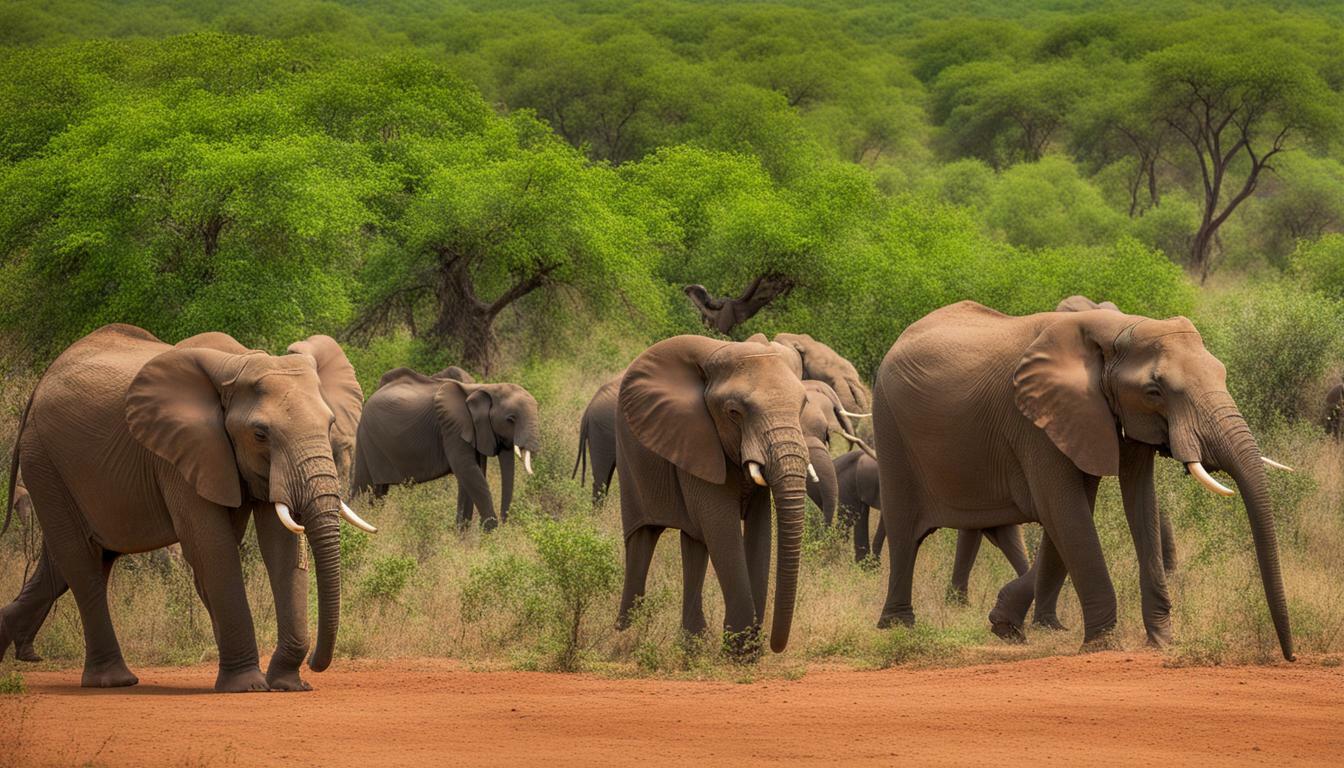









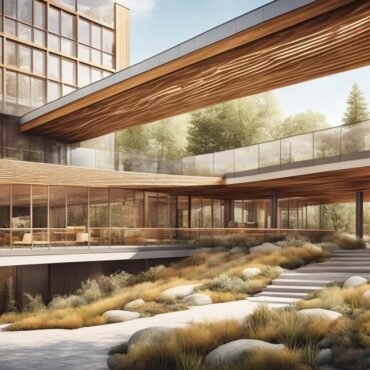










Post comments (0)